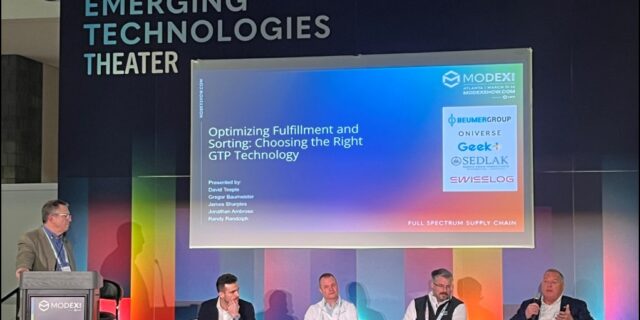Big Data and Your Organization: Where Do We Go Next?
January 14, 2025 By: Senior Management | Topics: IT Solutions, Supply Chain

By Brian Donnelly
As the Ecommerce, Warehousing, and Supply Chain sectors have grown over the past decades, the need for data and data solutions has become a central focus for many organizations. They face daily challenges and seek answers to questions like:
- Should we construct a new facility?
- Should we hire more people?
- What solution best fits our needs?
- Do we automate?
The answer to all these questions lies in one place: your data! Your data is essential for assessing trends, forecasting growth, and building financial ROIs, while simultaneously managing and driving cost-effective operations.
But where to begin?
Many organizations have invested in servers, mainframes, processors, and support staff to house and maintain the vast amounts of data required to operate their business. Often, this information is stored in large server rooms and protected like Fort Knox—as it should be! This data is the lifeblood of the organization, holding every transaction, order date, cost, and more that has transpired over the company’s existence.
But for many organizations, the question is: What next?
You have lots of data, sometimes without even knowing all that is there. You may have some reporting of key statistics and financials, often controlled by select skilled individuals (IT Specialists, Data Engineers, Financial gurus, etc.). These individuals typically report to senior leadership, who have a vision for the organization. However, there is often a disconnect with front-line operations, who are trying to maintain day-to-day business.
But what if it doesn’t have to be that way anymore?
The data most organizations have is like a dictionary of 1’s and 0’s. It contains everything but needs to be put together in a way that is meaningful to its target audience, regardless of level, and that aligns top to bottom in the organization. The work on the front line directly impacts top-level results, and top-level strategies dictate work and requirements on the front line.
So, how do you execute this?
The answer is becoming better, smarter, and more intuitive by the day! Where companies used to utilize tools like Lotus Notes, Excel, or various products that could house and summarize data well, the need to process larger data sets now requires more sophisticated tools. One million records used to be a lot of data, but today that could just be a drop in the bucket of what an organization holds. Many organizations are rich with data, but they may not know the tools available to tap into their wealth.
Fortunately, programs are becoming easier to use, and the skills required to manage them are becoming more accessible. Programs like Excel are expanding capabilities with items like Power Pivot and Power Query. Data visualization tools like PowerBI, Tableau, and MicroStrategy make “looking” at large data very simple and intuitive. Tying your data to these solutions can be accomplished easily with programs like SQL and Azure, which are more readily available than in the past. With these tools, we are able to comprehend massive amounts of data to tell a story about the organization, which will allow you to make more informed decisions and create the right strategy.
If you have questions about the best solution to use and how to get this rolling for your company, there are several avenues you can take, such as YouTube, LinkedIn, and IT and MIS resource professionals. If you are unsure what question to ask or how best to frame your story, consulting firms like Sedlak, with decades of experience in the supply chain industry, can aid in evaluating data, creating ROIs, connecting you with vendors, and ultimately building solutions that work. They drive answers to the hard questions like: Am I being as productive as possible? Do I have proper staffing? Do I need to build, rent, or expand facilities?
It starts with understanding your data. That is what should drive your decisions (top to bottom) to best optimize the efficiencies of your organization.
Contact us at info@jasedlak.com to talk to an experienced consultant.





